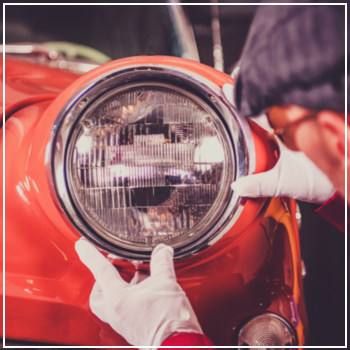However, restoring an older vehicle isn't without its challenges. You may face issues like scarce parts, rust, and unexpected costs. Many classic cars were built using materials that are more prone to corrosion, especially if they've been sitting for years. This means regular maintenance and proper restoration techniques are crucial to avoid costly mistakes. Plus, budgeting is essential—what starts as a fun project can quickly turn into a financial burden if not planned properly. If you're not careful, your dream project could end up as a rusted eyesore in your driveway. But with the right approach and some professional guidance, you can bring your classic car back to its former glory. Here’s what you should keep in mind when planning your restoration journey. Before diving into the restoration process, take time to find the perfect vehicle. Research different models, eras, and body styles to understand what fits your style and budget. Don’t rush the decision—visit the car in person, inspect it thoroughly, and ask about its history. Look for signs of rust, especially in hidden areas like the frame, floorboards, and under the seats. A car that looks good on the outside might hide serious structural damage underneath. Once you’ve found a car you love, do some homework on parts availability. Some models are easier to restore than others, depending on how many original components are still available. If you’re lucky, you might even find a car that’s already in decent condition and just needs a few key upgrades. One of the biggest hurdles in classic car restoration is finding the right parts. Unlike modern vehicles, many older cars don’t have readily available replacement components. You may need to search through salvage yards, online marketplaces, or specialty dealers to track down OEM (original equipment manufacturer) parts. In some cases, you might have to fabricate parts yourself or use high-quality aftermarket alternatives. While purists prefer original parts, practicality often plays a role. If a part is no longer available, you may need to compromise. The key is to make smart choices that maintain the car’s authenticity while ensuring it runs safely and reliably. Your skill level will determine how much of the restoration you can handle. Simple tasks like painting, detailing, and replacing minor components can be done at home. However, major systems like the engine, transmission, and exhaust require expert knowledge. These parts are complex and can be dangerous if not handled correctly. It’s wise to involve professionals for these critical areas to avoid costly errors. Before starting, create a detailed plan outlining which tasks you’ll do yourself and which ones you’ll outsource. This will help you stay organized and focused throughout the process. Classic car restoration can be expensive—and it’s easy to underestimate the costs. From parts and labor to unexpected repairs, things can add up quickly. It’s important to set a realistic budget and stick to it as much as possible. Consider setting aside extra funds for emergencies, as problems often arise during the process. Remember, the goal is to restore the car, not break the bank. Be mindful of your spending and prioritize the most important upgrades first. With proper planning, you can enjoy the process without financial stress. If you're ready to start your classic car restoration, consider reaching out to experts who specialize in vintage vehicles. At DaSilva’s Auto Body, we offer top-notch restoration and rust removal services tailored to antique and classic cars. Contact our Naugatuck location today to learn more and get your project started on the right track. Extruder Screw Barrel,Pellet Extruder Screw,Mini Extruder Screw,Filament Extruder Screw Zhejiang Zhongyang Screw Manufacturing Co., Ltd. , https://www.zhongyangscrew.com Restoring a vintage or antique car can be one of the most rewarding projects for any car lover. It's not just about bringing an old vehicle back to life—it's about connecting with history, mastering mechanical skills, and enjoying the satisfaction of seeing your hard work pay off. Whether you're a seasoned mechanic or a first-time enthusiast, there's something special about reviving a piece of automotive heritage.
Restoring a vintage or antique car can be one of the most rewarding projects for any car lover. It's not just about bringing an old vehicle back to life—it's about connecting with history, mastering mechanical skills, and enjoying the satisfaction of seeing your hard work pay off. Whether you're a seasoned mechanic or a first-time enthusiast, there's something special about reviving a piece of automotive heritage.Choosing the Right Car
Sourcing the Right Parts
Deciding What to Do Yourself
Planning Your Budget